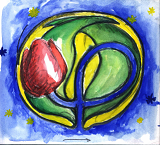 |
Tulip
4.6.0
Better Visualization Through Research
|
 |
Tulip
4.6.0
Better Visualization Through Research
|
00001 /** 00002 * 00003 * This file is part of Tulip (www.tulip-software.org) 00004 * 00005 * Authors: David Auber and the Tulip development Team 00006 * from LaBRI, University of Bordeaux 00007 * 00008 * Tulip is free software; you can redistribute it and/or modify 00009 * it under the terms of the GNU Lesser General Public License 00010 * as published by the Free Software Foundation, either version 3 00011 * of the License, or (at your option) any later version. 00012 * 00013 * Tulip is distributed in the hope that it will be useful, 00014 * but WITHOUT ANY WARRANTY; without even the implied warranty of 00015 * MERCHANTABILITY or FITNESS FOR A PARTICULAR PURPOSE. 00016 * See the GNU General Public License for more details. 00017 * 00018 */ 00019 00020 /* 00021 * Note for developers 00022 * 00023 * When writing the doxygen documentation for a class, one should follow those steps: 00024 * 00025 * 1/ Remove the /// @cond DOXYGEN_HIDDEN condition on top of the header and the /// @endcond tag at the bottom. 00026 * If you are adding a new class to Tulip and didn't write the documentation yet, you should add those tags until the documentation is written. 00027 * 2/ Every class should belong to a doxygen group. This means that a @ingroup declaration must be added before the class @brief tag. 00028 * 3/ A doxygen group is identified by a single-word identifier (first word after the @defgroup declaration). What follows in the @defgroup declaration is the pretty name that will appear into the final HTML document. 00029 * 3/ Definitions for doxygen groups are found in this file. 00030 * 4/ Code examples and tutorials belong in this directory too. There should be one header per tutorial to ease documentation process. 00031 * 5/ Please remember that code comments should NEVER begin with /** (use /* instead) in order to exclude them from doxygen. 00032 */ 00033 00034 #define DOXYGEN // Used to separate licence from groups definitions 00035 00036 /** 00037 * @mainpage Welcome to Tulip's documentation. 00038 * You can jump right in with \ref graph_display/graph_display.cpp "one of our code examples", or browse the documentation by module. 00039 * 00040 * See for instance the documentation for the @ref Graph. 00041 */ 00042 00043 /** 00044 * @defgroup Checks Model Checking 00045 * @brief Graph model checking 00046 * Classes in this group allow to perform various checks on a graph data structure. 00047 */ 00048 00049 /** 00050 * @defgroup Structures Data structures 00051 * @brief Tulip basic data structures 00052 */ 00053 00054 /** 00055 * @defgroup Graph Graph model 00056 * @brief Tulip graphs manipulation system 00057 * Classes in this group are related to the core system of Graph manipulation. 00058 */ 00059 00060 /** 00061 * @defgroup Observation Observation system 00062 * @brief Tulip observer pattern implementation 00063 * Classes in this group are involved in the observation system. 00064 */ 00065 00066 /** 00067 * @defgroup OpenGL 3D graph rendering 00068 * @brief OpenGL graph rendering 00069 * Classes in this group are related to the OpenGL rendering of graphs and to the OpenGL augmented display 00070 */ 00071 00072 /** 00073 * @defgroup Plugins Plugins system 00074 * @brief Tulip plugins interfaces 00075 * Classes in this group are interfaces for the plugins system. You will subclass one of them when creating your own Tulip plugins. 00076 */